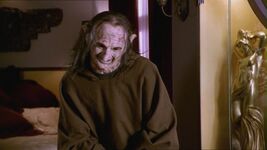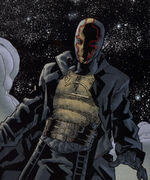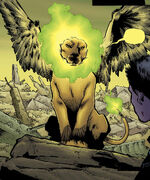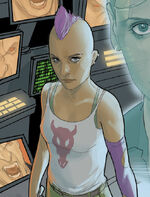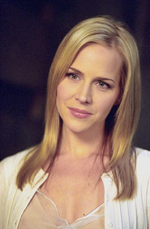| Line 70: | Line 70: | ||
**[[Maggie Walsh|Dr. Maggie Walsh]] |
**[[Maggie Walsh|Dr. Maggie Walsh]] |
||
**[[The Initiative (organization)|The Initiative]] |
**[[The Initiative (organization)|The Initiative]] |
||
| + | **[[Forrest Gates]] |
||
<gallery orientation="square" position="center" widths="150" spacing="small" navigation="true"> |
<gallery orientation="square" position="center" widths="150" spacing="small" navigation="true"> |
||
BIgBad Adam.jpg|Adam|link=Adam |
BIgBad Adam.jpg|Adam|link=Adam |
||
| Line 76: | Line 77: | ||
S413 Maggie.png|Dr. Maggie Walsh|link=Maggie Walsh |
S413 Maggie.png|Dr. Maggie Walsh|link=Maggie Walsh |
||
4X07TI1001.jpg|The Initiative|link=The Initiative (organization) |
4X07TI1001.jpg|The Initiative|link=The Initiative (organization) |
||
| + | Primeval08.jpg|Forrest Gates|link=Forrest |
||
</gallery> |
</gallery> |
||
Revision as of 02:41, 24 September 2017
A Big Bad is a term applied (mostly by fans and the show's creators, but also spoken in the Buffyverse) to describe major villains on Buffy the Vampire Slayer and Angel. Specifically, it is usually accepted to refer to the single villain that, in each season of Buffy, is the dominant and final one.
The Big Bad is typically not only dangerous (most of the Big Bads threaten some version of apocalypse) but also help articulate the major themes of the season. Some of the Big Bads are built up and present from the season's beginning (or earlier) - i.e., The Master - and others are sprung as a surprise near the end of the season - i.e., Angelus.
For some of the show, the seasons followed a pattern in which lesser villains (presumed to be the Big Bad) are introduced, only to later lead to the more powerful surprise Big Bad:
Near the beginning of the season, a villain was introduced who appeared to be a Big Bad and absorbs much of the heroes' attention. Then, suddenly, this "Little Bad" is rid of (typically killed) and replaced by the Big Bad, usually about halfway through the season.
Buffy Little Bads/Big Bads
In Buffy, the little bad/big bad pattern is rarely perfect, and the specific instances are often disputed. Unlike the other "Little Bads", Spike does not die (although it is well known Joss Whedon intended the character to be offed, until James Marsters' portrayal convinced the show's creators to keep him around); the Mayor's presence is well known before Mr. Trick is killed; and Warren dies much later in the season than the other "Little Bads". However, Whedon has stated that the true Big Bad of season six was "life."
Nevertheless, creative arguments can be made for different interpretations of the Little Bad/Big Bad pattern. For example, Faith may be interpreted as the true replacement for Mr. Trick in Season 3.
This pattern in action:
Movie/The Origin
- Big Bad
- Little Bad
- Benny Jacks (initially)
- Amilyn
Season 1
- Big Bad
- Little Bad
- Darla
- Order of Aurelius
- The Anointed One
Season 2
- Big Bad
Season 3
- Big Bad
- Little Bad
Season 4
- Big Bad
- Little Bad
Season 5
- Big Bad
- Little Bad
- Glory's Minions
- The Knights of Byzantium
- Doc
Season 6
- Big Bad
- Little Bads
Season 7
- Big Bad
- Little Bad
Season 8
- Big Bad
- Twilight
- Little Bad
Season 9
- Big Bad
Season 10
- Big Bad
- Little Bad
Angel Little Bads/Big Bads
For Angel, the law firm Wolfram & Hart was the Big Bad present in the series; however, there were other major recurring threats that arose, those of which were either associates of Wolfram & Hart or a third party with its own agenda. While the format of the series didn't stick to an established Big Bad the way Buffy did, several characters and elements have represented significant season arcs, using the "Big Bad" term frequently. The pattern of this was as follows:
Season 1
- Big Bad
Season 2
- Big Bad
- Darla (initially)
- Drusilla (initially)
- Wolfram & Hart
- Silas
Season 3
- Big Bad
- Little Bad
Season 4
Season 5
- Big Bad
- Lindsey McDonald (initially)
- Marcus Hamilton
- Circle of the Black Thorn
After the Fall
Demon Lords->Vamp Gunn/Senior Partners
IDW series
Angel and Faith
Spike Little Bads/ Big Bads
Spike received a lot of comic book series that have disputable canon, therefore creating official new Big Bads and treating it as some kind of a second spin-off.
Spike: Asylum - Mosaic Wellness Center
Spike: Shadow Puppets - Smile Time (show)
Spike: The Devil You Know - Tansy Fry
Spike (IDW series) - Drusilla/John/Wolfram & Hart
Behind the scenes
- At the end of the Season 7 episode "Lessons," the First Evil appears in the form of the previous six seasons' Big Bads, in reverse chronological order: Warren Mears (season 6), Glory (season 5), Adam (season 4), Mayor Wilkins (season 3), Drusilla (season 2), and The Master (season 1).
- The term was originally coined by Buffy in the episode "Bewitched, Bothered and Bewildered", in which she describes Angelus as "the big bad thing in the dark". The phrase may originate in various fairy tales (particularly "3 Little Pigs" and the related song) about the "big bad wolf". It has also been expanded as "Big Bad Evil Guy" (abbreviated as BBEG). It is first used on screen in the simpler "Big Bad" form in Season 3, in the episode "Gingerbread" where Buffy says that an occult symbol is harmless, "not a big bad". Spike has also nicknamed himself "Big Bad".
- Darla was the only member of the Whirlwind to not play a significant antagonist role in the second season of Buffy the Vampire Slayer.
In other media
The term big bad has been adopted by several other series.
- Wikipedia lists several examples.
- The Supernatural Wiki has a page on Big Bads, listing out their respective seasonal antagonists.
- The TV Tropes Wiki lists many more examples.


